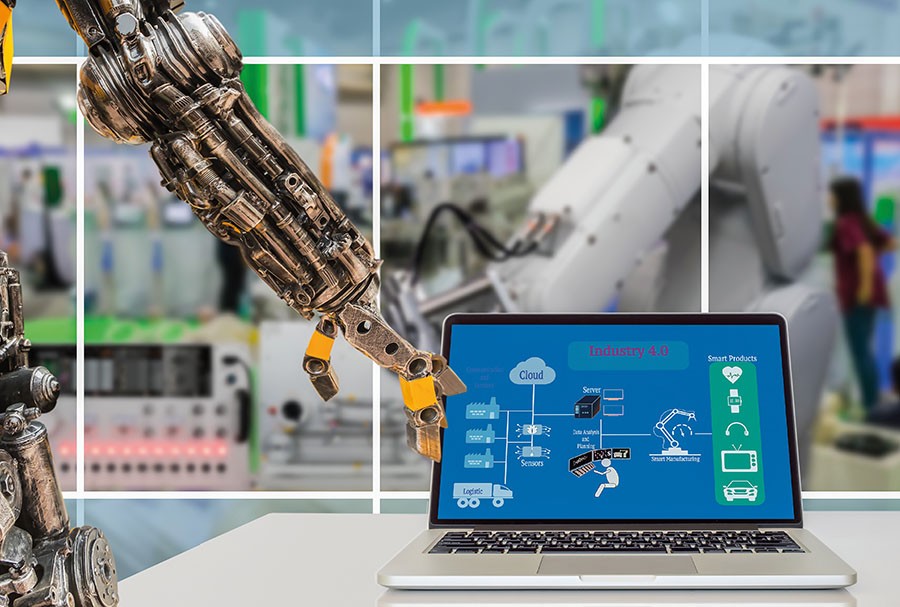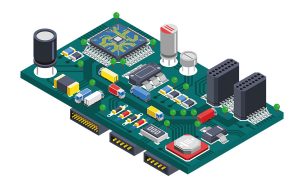With consumer demand reaching new highs, automation in industry is essential. Dr Ing. Emmanuel Francalanza writes about his contribution to streamlining the complex factory design process for contemporary engineers.
From smartphones, to smartwatches, smart cars to smart houses, intelligent technology is inescapable. Busier people have made efficiency a valuable currency and thus the ‘Internet of Things’ (IoT), and its plethora of connected devices, has become a necessary part of everyday life. The application of this model goes way beyond the regular consumer, however.
Listen to this article as a podcast
To keep up with demand and the public’s seemingly insatiable thirst for new and more varied products, factories are being upgraded too. Thus, we now have the ‘Industrial Internet of Things’ (IIoT). The ‘things’ being controlled on the factory floor are the machines, robots and systems carrying out a variety of manufacturing processes that transform raw materials into the products sent out to market. Due to their impact on operations, these technologies have brought about the 4th Industrial Revolution—Industry 4.0.

Old news
The idea of highly automated factories may come across as very contemporary: however, the reality is that they have existed for decades. This transition began towards the late 80s early 90s with the development of computer integrated manufacturing (CIM). The CIM approach advocated the design and development of manufacturing systems and underlying control systems to integrate different machines and have them work together. Companies such as Lego made use of these technologies to continue producing in countries such as Norway where human labour wages are extremely high.
In recent years affordable IIoT technologies have seen the development of new business models that allow companies to sustainably implement fully automated systems. But the task is easier said than done. In designing factories which implement Industry 4.0 technologies, engineers must take into consideration a vast array of moving parts: interaction between machines, interaction between machines and human operators, changing business strategies. Big data has also changed the game, forcing engineers to wrap their heads around massive quantities of information. Long story short, the engineer needs to be a robot themselves to complete the task of designing a modern factory.
Whilst providing the required support, the intelligent design assistant leaves the engineer with the final decision making, control, and responsibility, allowing humans to utilise their innate ingenuity to solve the ultimate problems.
Approaching solutions
To address these challenges, I (Dr Ing Emmanuel Francalanza, Department of Industrial and Manufacturing Engineering at the University of Malta) proposed, implemented, and evaluated an artificial intelligence (AI) based digital factory design tool, nicknamed ‘FactDES’. This initiative supports the implementation of smart factories through the use of virtual environments and representations that supplement the real manufacturing activities across the factory life cycle.
There are two different approaches to providing such AI support: artificially replicating human cognition in AI to automate the design tasks, and developing intelligent design assistants. Given the problems with replication and the difficulties that arise from making decisions based on uncertain data or information, researchers wisely opted for the concept of an intelligent assistant.
Intelligent design assistants can learn from past design experiences and carry out semi-automated tasks. The intelligent design assistant provides explanations for its reasoning and acts as a colleague to the engineer designing the factory. The working philosophy is therefore to complement the engineer’s own natural skills rather than replace them. Whilst providing the required support, the intelligent design assistant leaves the engineer with the final decision making, control, and responsibility, allowing humans to utilise their innate ingenuity to solve the ultimate problems.
Not plain sailing
While the concept of an intelligent assistant was the solution to one problem, actualising that solution posed its own set of issues. Developing the Human-System Interface (HS-I) for the intelligent assistant proved to be among the biggest challenges. Engineers cannot continuously be presented with large amounts of information to process. Only information which is of high relevance to the task and decisions being made needs to be presented to the stakeholders, otherwise there is the risk of information overload. To avoid this, an MIT-developed approach called ‘Just In Time Information Retrieval’ (JITIR) was implemented. The JITIR approach filters information, recommending what is needed at the right time to proceed with the design in a non-intrusive manner. From the results of the evaluation, this approach was greatly appreciated by the stakeholders who assessed this tool. The encouraging results obtained from this research evaluation have shown that the digital factory tool, and the design approach framework on which it is based, meet their goals and are useful in practice. This result can lead the way for the development and integration of such knowledge-based decision-making approaches within state-of-the-art digital factory tools.
However, implementing these new Industry 4.0 models will influence society, and that too needs to be taken into account. As has been recently discussed at the World Economic Forum (WEF) in Davos, unemployment may increase, whilst wages for low skilled workers and their rights will be attacked. In February 2017 renowned inventor and entrepreneur Elon Musk also sounded a ‘warning’ about the future of manufacturing operations and hinted towards the introduction of a universal basic income as a result of automation in manufacturing. Elon Musk is very familiar with the implications of such intelligent factories since Tesla’s very own Gigafactory, currently under construction in Nevada, US, employs such technologies. Likewise, Bill Gates has also recently suggested that governments should tax companies’ use of robots who are taking human jobs, as a way to at least temporarily slow the spread of automation and to fund other types of employment.
Industry 4.0 brings new meanings for the concepts of manufacturing work, availability, and flexibility. The question many are asking is: will this revolution lead to intelligent systems and robots taking over all manufacturing activities? The implications will be vast and people need to be protected. At all costs, we need to avoid the dire scenarios propagated by pop culture, but it would be cool to have our own Sonny leading a factory.






Comments are closed for this article!